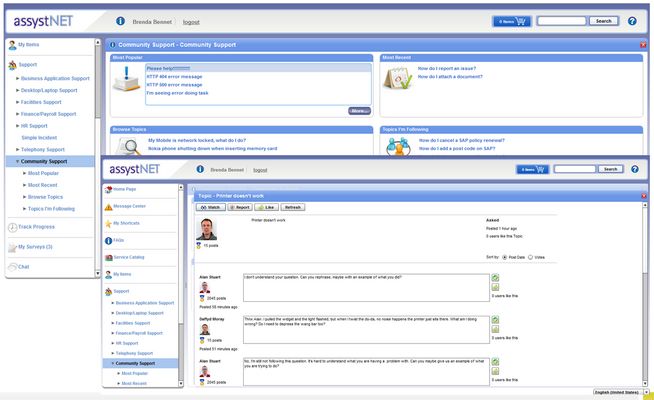Privacy Concerns Driving Social Networks In-House
When it comes to social media, the adoption by users of public services has many IT departments worried. To stem the tide, many enterprises are choosing to build their own social networks or use services that promise privacy.
In the PII 2012 conference held last week in Seattle, a hour was turned over to start-ups that were building applications that ensured users (and enterprises) that their data was secure. PII (privacy, identity, and innovation) speakers echoed the “social = public” message that has many shops leery or just downright frightened. The common theme of the entrepreneurs: we give you the benefits of social media without exposing your data to everyone -- just the people you choose.
Emphasizing this move to private social media, I received two interesting press releases last week. The first was a release from the U.S. Department of Defense announcing their “social media behind a firewall” had reached 200,000 users. If there’s one department that wants to share private information within its own ranks (pardon the pun), it’s the DoD.
The release publicized its reaching a “historic milestone in its efforts to collaborate and share information using social media behind the firewall” with the 200,000th user registering for milSuite, “the military’s secure collaborative platform.” The purpose of MilSuite is clear: it’s an “enterprise-wide suite of collaboration tools that mirror existing social media platforms such as YouTube, Wikipedia, Facebook and Twitter. Through the platform, DoD professionals and leadership access a growing repository of the military’s thousands of organizations, people, and systems around the globe.” Among those 200,000 users: “more than 200 flag officers ... including eight U.S. Army four-star generals, as well as nearly 20,000 field officers.”
The site allows users (including those military leaders) to “share their best practices with an enterprise-wide community, as well as leverage existing knowledge to improve current processes and reduce duplicative efforts.” The suite’s four components include a wiki, a networking tool for collaboration, a blog, and a video sharing feature. Version 4, due later this year, will include SharePoint integration.
Sharing was also on the mind of Axios Systems when they announced an update to their IT service management application that “enables better, faster, and cheaper delivery and support of IT services.” A key component of the new release, called assyst10, is social media. It provides a friendly interface that users can easily grasp (see below).

According to their release (and in conversation with the company I had last week), “As social media becomes more engrained into the everyday life of the consumer, it is also becoming more pervasive within the enterprise as a means to capture pertinent data that aligns IT services to business outcomes. With the launch of assyst10, Axios Systems is creating an IT services environment that integrates social technologies with the foundational ITSM capabilities desired by companies worldwide. As a result, assyst10 improves IT efficiencies and enhances the delivery of business-centric IT services, driving greater value to the end user.”
In its four-point benefit list, Axios mentions IT-to-IT collaboration (which rapidly shortens support time and cost), crowdsourced community support (to reduce support costs by “avoiding phone and e-mail, allowing users to maximize their usage of key business applications”), and IT public relations (by monitoring support conversations, IT can demonstrate that it cares).
The fourth point, however, is where I think the biggest benefit can be found: peer-to-peer support. Axios understands that IT is moving in the direction of self-service -- helping users do what they can for themselves so IT can make progress on strategic goals, and social networks is certainly one way to do it. After all, says Axios, peer-to-peer “provides instant support, increasing customer satisfaction.”
Let’s face it -- when it comes to getting the tech support you need, do you want to wait on hold or quickly search a knowledge base built by actual users who provide detailed solutions that may solve your problem?
-- James E. Powell
Editorial Director, ESJ
Posted on 05/21/2012